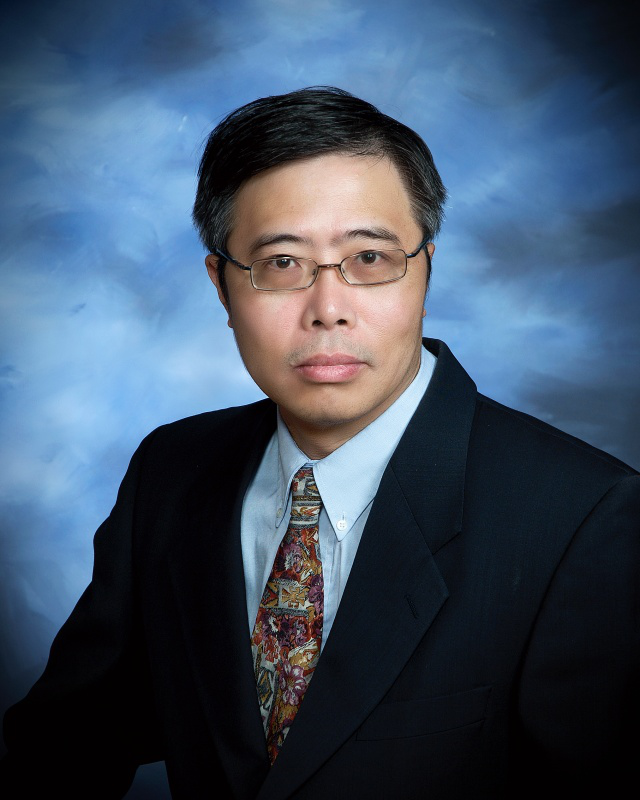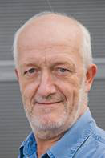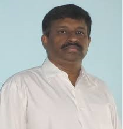Speakers
Keynote Speaker I

Prof. Henry Hu
University of Windsor, Canada
Title: Mechanical Properties and Microstructure of Squeeze Cast Mg Hybrid Nano Composite
Abstract:
Magnesium alloy AM60 based metal matrix composites (MMCs) reinforced with alumina (Al2O3) fibres and/or nano-size particles were successfully fabricated by preform-squeeze casting techniques under an applied pressure of 90 MPa. Tensile testing was performed and microstructures were analyzed on squeeze cast unreinforced AM60 Alloy, fibre reinforced AM60 metal matrix composite, and Mg (AM60) hybrid nano composite containing alumina fibres and nano-particles (MHNC). The microstructure analysis revealed the homogeneity of reinforcements in the matrix alloy. With the addition of fibres, the tensile properties of the fibre-reinforced composites were improved with the considerable reduction of ductility compared with AM60 alloy. The introduction of additional nano-particles into the metal matrix not only significantly improved the tensile properties of the composites, but also simultaneously restored the ductility reduction caused by the reinforcement of fibres.
Bio:
Dr. Hongfa (Henry) Hu is a tenured full Professor at Department of Mechanical, Automotive & Materials Engineering, University of Windsor. He was a senior research engineer at Ryobi Die Casting (USA), and a Chief Metallurgist at Meridian Technologies, and a Research Scientist at Institute of Magnesium Technology.
He received degrees from University of Toronto (Ph.D., 1996), University of Windsor (M.A.Sc., 1991), and Shanghai University of Technology (B.A.Sc., 1985). He was a NSERC Industrial Research Fellow (1995-1997). His publications (over 150 papers) are in the area of magnesium alloys, composites, metal casting, computer modelling, and physical metallurgy. He was a Key Reader of the Board of Review of Metallurgical and Materials Transactions, a Committee Member of the Grant Evaluation Group for Natural Sciences and Engineering Research Council of Canada, National Science Foundation (USA) and Canadian Metallurgical Quarterly. He has served as a member or chairman of various committees for CIM-METSOC, AFS, and USCAR.
The applicant’s current research is on materials processing and evaluation of light alloys and composites. His recent fundamental research is focussed on transport phenomena and mechanisms of solidification, phase transformation and dissolution kinetics. His applied research has included development of magnesium automotive applications, cost-effective casting processes for novel composites, and control systems for casting processes. His work on light alloys and composites has attracted the attention of several automotive companies.
Keynote Speaker II

Prof.Dr. Eberhard Manske
Technische Universität Ilnmenau, Germany
Title: Nanopositioning and nanomeasuring machines for cross-scale measurement, fabrication and manipulation with nanometer precision
Abstract:
Nanopositioning and Nanomeasuring Machines (NPMM), developed at TU Ilmenau provides high-precision measurement and positioning of objects across 10 decades, from 20 pm resolution up to 200 mm measuring range. They are working on the basis of the error-minimal, extended three dimensional Abbe-comparator principle, with high precision fibre coupled laser interferometers and several optical, tactile and atomic force probes.
Step height standards from some nanometres height up to the micrometre range can be measured with a conformity to reference value of the national metrology institute (PTB) in the 1 nm range. At a 4 mm step height standard a conformity of the absolute height of 3.8 nm with a reproducibility of 0.073 nm was achieved. Additional, pitch measurements of lateral gratings up to 0.02 nm reproducibility where shown. The high positioning capability was demonstrated in a go round in 25 nm circles with the stage of the NPM-machine with a control deviation of less than 0.5 nm. Control deviations in the order of 3 nm can be achieved with scanning speed of 1 mm/s.
Therefore, these machines are suitable not only to measure with an outstanding nanometre performance but also to manipulate and to fabricate on the nanoscale. NPMM technology is increasingly proving to be a key technology and enabler for many areas of nanotechnologies, from MEMS fabrication and analysis, up to advanced tip and laser based nanofabrication as a new alternative lithography approach.
Here, our aim is to combine latest micro- and nanofabrication technologies with the enormous possibilities of the NPMM. For example, a fs-laser was integrated into the machine and first micro-structures based on two photon polymerization were realized. Furthermore, a new AFM tip-based nanofabrication process for high-localized sub-5nm structuring is developed and investigated. The publication presents measurement and processing results and discusses the enormous possibilities of this new technology.
Bio:
Prof. Dr.-Ing. habil. Eberhard Manske holds a professorship “Production and Precision Measurement Technology” at the Technische Universität Ilnmenau since 2008. After his studies of electrical engineering in 1982, he obtained the doctoral degree in 1986, and in 2006 the postdoctoral lecturing qualification.
His research activities are in the fields of the development of Nanopositioning and Nanomeasuring Machines. He was 2008-2013 spokesman of the collaborative research centre “Nanopositioning and Nanomeasuring Machines (SFB 622)” and since 2017 he leads the research training group “Tip- and laser-based 3D-Nanofabrication in extended macroscopic working areas (NanoFab)” both funded by the German Reseach Council.
His research work is mainly focused in high precision laser interferometry, laser stabilization, frequency comb technology, optical and tactile nano sensors and scanning probe techniques. Newly research work is carried out in direction of tip and laser based nanofabrication.
Keynote Speaker III

Prof. Dr. N Balasubramanian
Department of Chemical Engineering
AC Tech Campus, Anna University, India
Title: Development of Graphene-Based Nanocomposites for Energy, Environment, and Biomedical Applications
Abstract:
In the recent times research areas involving nanoscience, nanotechnology and nanocomposites has been the subject of interest among the researchers due to its technology innovation in various applications such as automotive, aerospace, packaging, electronics, biotechnology, flexible sensors, and many other applications. Of the many materials that are researched presently, graphene-based materials has drawn interest of many researchers due to their wide range of promising applications in the fields such as energy, biomedical aids, membranes, flexible wearable sensors and actuators.
Graphene, the thinnest material in existence, has phenomenal properties like high surface area (highest, adsorption and surface reactions), electron mobility, thermal conductivity and mechanical strength.Some of its fascinating property that makes it a suitable candidate for energy and photocatalytic applications includes high thermal conductivity, mechanical good with high Young's modulus (1 TPa) and intrinsic strength of 130 GPa, quantum hall effect and high electronic transport. It also possess high optical transmittance and flame-retardant properties due to their zero bad gaps as a single sheet. [1-4]
Apart from that it has to be noted that graphene and its derivatives' potential applications are mainly due to the different form of these graphene materials (GO, rGO, fGO, frGO and mG) based on specific applications. We have incorporated graphene with metal sulphides thereby enhancing the photocatalytic properties of the metal sulphides. Beside these properties, graphene has the ability of reduced recombination rate that results in increased photocatalytic activity, which is a necessity for environmental application.
We have developed nitrogen-doped graphene/PEDOT composite as a competent electrodes material for various energy and power applications. In addition to that, we have studied for the first time the inflammatory response of graphene oxide successfully on the bone marrow macrophages of mice models. The in vivo studies of the same on the peritoneal cavity of mice showed good compatibility without any rejection inside the body.
Bio:
Prof. N. Balasubramanian graduated from National Institute of Technology Trichy, India and subsequently received his Ph.D in Chemical Engineering from Indian Institute of Technology Madras, India in 1996. He joined at Central Electrochemical Research Institute Karaikudi, India and worked as Scientist for nearly 8 years. Presently Dr. N. Bala is working as Professor in the Department of Chemical Engineering, Anna University, Chennai, India. Dr. N. Bala was a Postdoctoral Researcher at the National Cheng Kung University Taiwan during 2001-2002, a visiting Scientist in the Department of Chemical Engineering, Seikei University Japan, in 2007. My area of interest includes electrochemical treatment of industrial effluent, membrane bioreactor, electrode preparation for Fenton process, Regeneration of spent carbon through electrochemical method, development of graphene based biosensors and graphene based polymer nanocomposite for energy storage. Dr. N. Bala has published more than 90 papers in peer reviewed international journals. Dr N Bala has funded projects worth of 10millian. He has received several awards for his academic achievements.